
Search
Poor women living in Northern Kenya’s drylands are one drought away from slipping even deeper into economic insecurity as such shocks threaten income from the region’s main livelihood – livestock herds managed by men. The BOMA Project, which has strung a safety net for these ultra-poor women by helping them launch small businesses, amass savings, get healthcare and gain life skills, is one of several organizations deploying this Poverty Graduation Model to foster resilience and “graduate” people out of extreme poverty.
Developed by Bangladesh-based NGO BRAC, the Poverty Graduation Model (definition) – implemented by TaroWorks clients BOMA Project, Village Enterprise and TrickleUp – is one of the more promising poverty alleviation strategies. What’s also become clear to practitioners who work with the target audience of women in remote and impoverished areas of the African continent or Latin America, is that a household’s economic health can go from bad to even worse when a failed harvest, military conflict or flash flood hits a community.
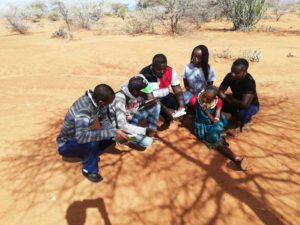
Bolstering already economically vulnerable women against such disruptions requires constant monitoring of progress through the program cohorts, the ability to collect and analyze field data to make real-time operational and business decisions and a way to coordinate the range of individuals working with program participants to ensure their success. Both BOMA Project and Village Enterprise explained during a recent webinar how they use a combination of TaroWorks’ offline mobile field service app, the Salesforce CRM and cloud database, and M&E tools created by Vera Solutions to monitor program performance and poverty alleviation.
“This has been quite useful in getting real-time data to facilitate…decision-making,” Monica Kundu, BOMA Project’s System Administrator, said during the webinar. “Anybody who works in the graduation space knows that when working with ultra-poor women, early intervention makes a difference between whether a woman graduates or she falls off during any stage of the program,” she continued. “… constantly checking on how they are doing is really important because there are very many factors that affect their success – such as conflict, working together and access to knowledge.”
The BOMA Project uses a combination of offline mobile app, Salesforce and monitoring features to help it target the best program candidates, monitor individual and group performance over each cohort’s two-year span and assess the productivity of BOMA Project’s field staff who assist the women entrepreneurs.
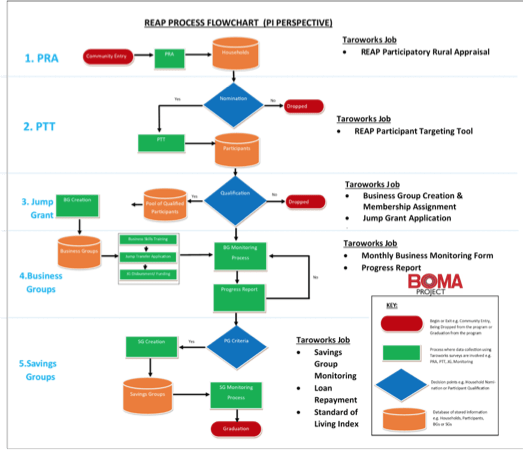
Technology tools include field surveys and data dashboards that qualify program participants, and forms which register and organize three-person business groups that launch and run women-owned small enterprises designed to supplement the would-be entrepreneurs’ incomes in times of economic risk. Mobile and cloud-based systems are also in place to track business revenue and expenses as well as administer and evaluate skills training provided business owners by their BOMA Project mentors.
Providing ultra-poor women with financial stability is a cornerstone of the Poverty Graduation Model so the BOMA Project also uses mobile devices and online analytics tools to award financial grants that recognize program participants’ progress and to administer loans the women disburse themselves through savings groups formed with BOMA Project’s help.
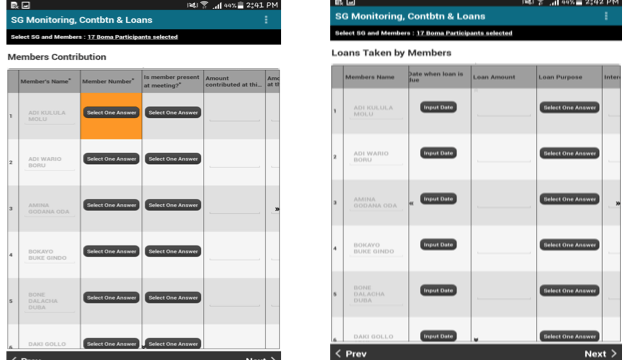
As Kundu explained during the webinar, having quick access to up-to-date data allows the BOMA Project to make crucial business decisions and to adjust program processes when roadblocks are encountered. For example, Kundu said knowing the detailed performance of each business created and run by the women, educates business mentors on what ventures they should suggest new program applicants consider. While a bead, crafts and curios business or a butchery may have done well in the past, poultry farming and tailoring might not have offered enough financial gain to consider promoting those choices as future opportunities.
Keeping an eye on program registration data as it is uploaded to Salesforce has prompted BOMA Project to expand its recruitment efforts to new territories after realizing it was falling short of quotas for registrants. Being able to determine the physical location of BOMA Project staff and business groups in the field using GPS functionality built into TaroWorks’ mobile field service app has also helped improve team member performance.
Kundu said business mentors, who counsel the women entrepreneurs on a monthly basis, should meet the women at their place of business to ensure they asses conditions first-hand. In one case, however, the data showed the GPS coordinates logged each time a business mentor uploaded meeting reports came from the mentor’s home – not the women’s business locations. The before and after image Kundu presented (below) illustrates how quickly such issues can be identified and rectified.

In the case of Village Enterprise, which operates a one-year Poverty Graduation Model in Uganda, an important driver of their need to digitize operations and supply data in real-time for business decision making was the creation of a unique financing tool called the Development Impact Bond (DIB).
This “payment-for-results” funding and investment model was developed by Village Enterprise to help support the creation of “4,000+ sustainable microenterprises over 3.5 years.” The project is pre-financed by impact investors. Outcome funders like USAID and DFID have committed $5.8 million dollars for the project, however Village Enterprise and the impact investors only receive the outcome payments from the outcome funders when “clearly-defined and rigorously-measured outcomes” are met. In this case, increased household income of program participants to certain levels.
Celeste Brubaker, Monitoring, Evaluation and Learning Director at Village Enterprise, said during the webinar that while Village Enterprise had been using Android mobile devices to collect data from the field since 2011, it searched for a method to effectively push analysis and results gleaned from that data back out to the field.
“Launching the development impact bond pushed us to prioritize dedicating the time and resources to solving that challenge of giving results back to the field more quickly,” said Brubaker.
Not only were program outcomes important to know accurately and quickly in order to trigger DIB funding, but Brubaker said:
“ … staff feedback was that it was taking too long to get the business monitoring results back to them and when the results were returned the plethora of information made it tough to form evaluative judgments regarding the health of businesses. In response to that we developed a business health classification system and operationalized getting the monitoring results back to staff in real time through backend automations and (data) dashboards.”
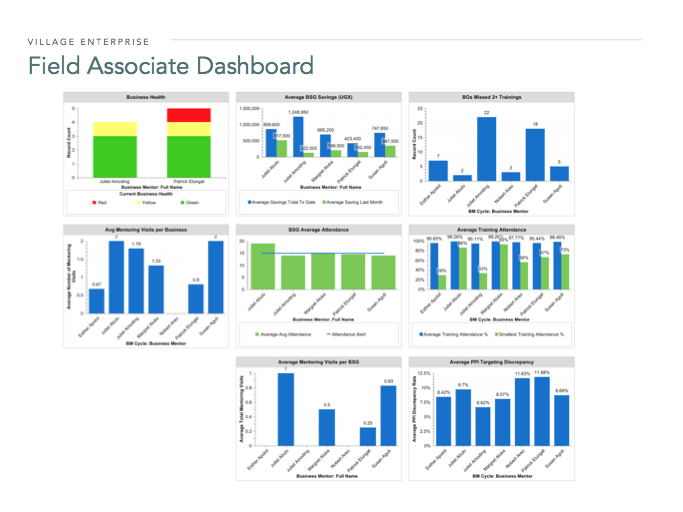
Village Enterprise now uses TaroWorks and Salesforce as part of its Poverty Graduation Model to (among other things) register business groups, input each group’s application for small business funding and monitor business health.
Mobile and cloud technology are also deployed to log mentoring sessions and conduct “quality control” by collecting photographs, digital signatures and GPS coordinates of all session attendees. If they’re able to connect to the internet, field staff can access data dashboards through their mobile device to check progress and spot trends.
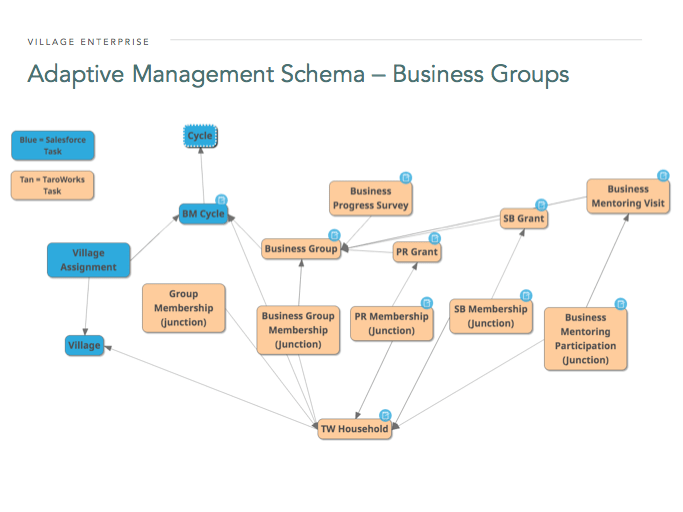
Among the lessons Brubaker said Village Enterprise learned by increasing the importance of technology in program management and evaluation are that:
“… having buy-in and support from leadership across the organization for ensuring that the organization culturally really is data-driven, is just so important.”
Brubaker also made the point during the webinar that while it was important to build in-house technical skills and capacity to help software and systems evolve to meet the needs of users in the field:
“…technology alone will not move an organization into a high capacity adaptive management space. Leaders across Village Enterprise invest energy in creating a culture that manages adaptively based on evidence.”
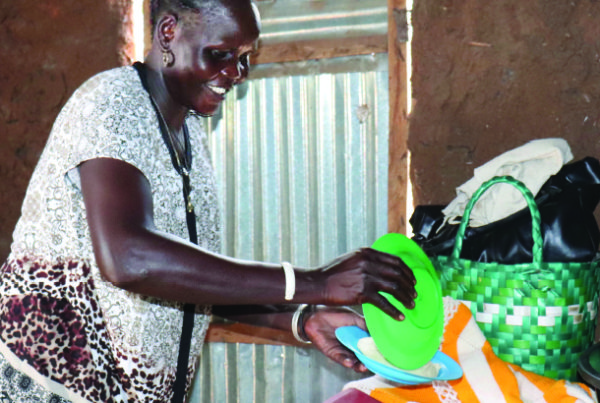
Kundu also focused on meeting the needs of team members who must use technology in the field:
“Focus on what you want to achieve, who is going to help you achieve your impact and as you design your program and as you design your solutions, focus on the end user who is going to use it, because if you design difficult forms they may not be able to collect the data for you,” she said.
One way BOMA Project succeeded in encouraging adoption of the software and hardware given field teams and headquarters managers to do their work, said Kundu, was to develop detailed user technical guides:
“We do initial technology training but what we’ve found that also works is development of a step-by-step guide with images,” she said. “We try to show them how using this technology makes their work easier. So when you get their buy-in, their interest increases but also releasing support guides has actually helped us reduce” technical support time significantly.
Editor’s Note: The original version of this blog post appeared on CGAP’s FinDev Gateway blog.
Many TaroWorks customers previously used paper and spreadsheets to collect data, analyze metrics and run field operations. Let us show you how TaroWorks’ offline mobile field service app can help scale your business by digitizing sales and supply chain management, increasing agent network productivity and analyzing data in real-time for business insights.
POST TOPICS
Sign up to receive emails with TaroWorks news, industry trends and best practices.
TaroWorks, a Grameen Foundation company.
Site by V+V